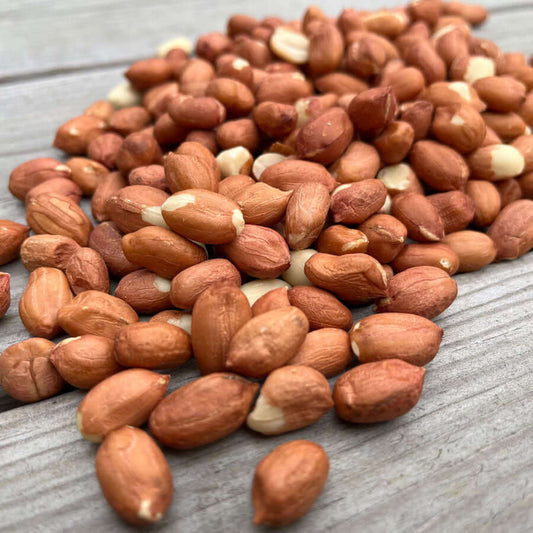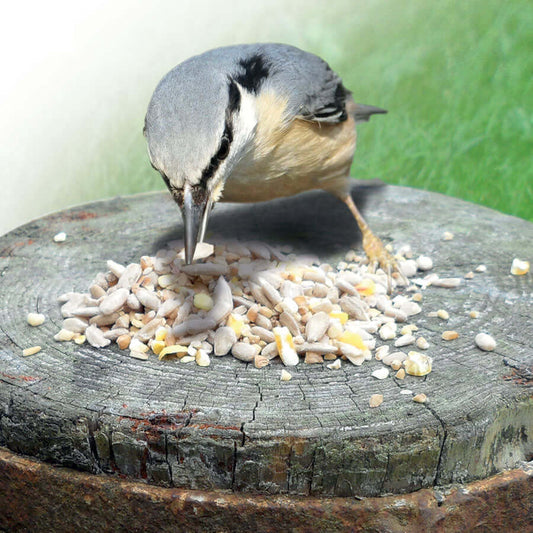Summer Garden Birds - A Guide to What You Can See

There’s something magical about early summer mornings in the garden - the sun gently rising, the flowers in bloom, and the cheerful chorus of garden birds starting their day. If you love spending time outdoors or simply enjoy watching nature from your window, summer is one of the best times of year to see a wide variety of garden birds across the UK.
From bold robins to shy wrens, summer brings a flurry of activity to our gardens. Birds are raising chicks, moulting, or feeding up after their long migration journeys. Whether you're a seasoned birdwatcher or a curious beginner, here’s what you can expect to see this season.
Common Garden Birds to Spot in Summer
-

House Sparrow
House sparrows are among the most familiar birds in UK gardens. Males are easily recognised by their grey crowns and black bibs, while females are plainer with brown streaks. They’re highly social birds and often gather in noisy flocks, especially around hedges or nest boxes.
-

Blue Tit
These colourful little birds are a delight to watch. With bright yellow bellies, blue caps, and green backs, blue tits are agile and curious. In summer, they’re often seen darting about the garden feeding their young or searching for insects among the leaves.
-

Robin
Robins are a year-round favourite, but you’ll often hear their sweet song drifting through the summer air. While they’re famous for their winter appearances, robins are territorial all year and may nest in garden sheds, hedges, or ivy-covered walls.
-

Blackbird
Male blackbirds are glossy black with bright orange beaks, while females are brown and speckled. Known for their rich,
flute-like song, blackbirds are early risers and often the first birds you'll hear at dawn. Summer is a busy time for them as they forage for worms, fruit, and insects to feed their young. -

Goldfinch
Goldfinches add a splash of colour with their red faces, black-and-yellow wings, and tinkling song. They're particularly fond of thistle and dandelion seeds, so a wilder patch of garden may attract them in numbers. Watch for them fluttering delicately through flowerbeds or perching on stems.
-

Great Tit
Larger than the blue tit, great tits are bold and easily identified by their black heads, white cheeks, and yellow bodies. They’re excellent mimics and have a variety of calls. During summer, they often flit about trees and bushes, hunting for caterpillars and spiders.
-

Chaffinch
Chaffinches are widespread and easily overlooked, but their pinkish chest and white wing bars make them a beautiful sight. Males sing proudly from trees or shrubs, and you may spot them hopping on the lawn or along fences.
-

Wren
The tiny wren is often heard before it's seen, delivering a surprisingly loud and complex song. They have a compact, rounded shape and a short tail often held upright. Wrens like dense undergrowth, so providing a wild corner in your garden can encourage them.
-

Dunnock
Sometimes mistaken for a female house sparrow, the dunnock is a shy ground feeder with a grey head and a soft brown back. Look for them skulking around flowerbeds or under hedges, often flitting low to the ground.
-

Swifts and Swallows
While not typical garden feeders, summer is the only time to see swifts and swallows in the UK. These aerial acrobats arrive in
late spring and spend the season feeding on insects mid-flight. Swallows often nest in eaves and barns, while swifts scream across the sky in tight, fast-moving groups.
Top Tips for Spotting Garden Birds
- Early Mornings are Best: Birds are most active at dawn when they’re feeding and calling to each other.
- Stay Still and Quiet: Let the birds come to you. Movement or noise will often cause them to flee.
- Binoculars and Field Guides: A simple pair of binoculars and a UK bird guide can really enhance your birdwatching.
- Keep a Notebook: Make a note of what you see and when - you’ll soon start to spot patterns and get to know your regular visitors.
- Create Bird-Friendly Spaces: Even a small patch of wildflowers, a hedgerow, or a quiet corner with a shrub can make a big difference.
Summer bird feeding begins with Haith's.
Encourage our beautiful birds into your garden with these specially selected products.
-
Sunflower Hearts - Premium Quality
Vendor:HAITH'S to HOME4.99 / 5.0
(203) 203 total reviews
Regular price From £4.99 GBPRegular priceUnit price / per£4.99 GBPSale price From £4.99 GBP -
Peanuts for Birds - Premium Quality Wild Bird Food
Vendor:HAITH'S to HOME4.8 / 5.0
(102) 102 total reviews
Regular price From £4.75 GBPRegular priceUnit price / per£4.75 GBPSale price From £4.75 GBP -
Huskfree Advance™ - No Mess Wild Bird Food
Vendor:HAITH'S TO HOME4.87 / 5.0
(151) 151 total reviews
Regular price From £6.99 GBPRegular priceUnit price / per£6.99 GBPSale price From £6.99 GBP -
Fat Robin™ - Soft & Nutritious Bird Blend
Vendor:HAITH'S to HOME4.45 / 5.0
(20) 20 total reviews
Regular price From £4.99 GBPRegular priceUnit price / per£4.99 GBPSale price From £4.99 GBP

Our summer gardens are alive with bird activity - a reminder of how vibrant and essential our green spaces are for wildlife. From bold goldfinches to whisper-quiet wrens, each bird brings its own song, colour, and charm to the season. So next time you’re out in the garden or looking through the kitchen window, take a moment to pause. You might just notice a visitor you hadn’t spotted before or hear a song that makes your morning that bit brighter.















1 comment
Thank you for the guide to garden birds, but you forgot about the wonderful starling. Babies arrive in late May and are enormous fun to watch, especially when they become teenagers! Starlings are wonderful family birds, and all take care of the young. One of the joys is listening to them chatter in the hedge as they clean and preen after a good bath. We’ve had a good season and are often inundated with some 70 starlings at feeding time, and the bird baths are disgusting when they have finished with them!